A Conversation With Alfredo and Isabel Aquilizan
Razor-sharp sickles from Indonesian blacksmiths, rubber slippers from inmates in Singapore and used blankets from anonymous citizens in Busan. These are just a handful of the unusual materials that Filipino artists Alfredo and Isabel Aquilizan use to create installations, which explore ideas of memory, displacement and home. The famed husband-and-wife duo—who have exhibited at the 2003 Venice Biennale, and numerous institutions across the globe—are also known for their participatory workshops. They have invited children and adults to help make immersive works ranging a teetering towers of cardboard homes to a giant pile of airplanes made of found objects. On the eve of their major survey exhibition at Museum MACAN in Jakarta, we speak with the artists about how they got here, what drives them and what’s next.
Share this article:
Interview by Payal Uttam
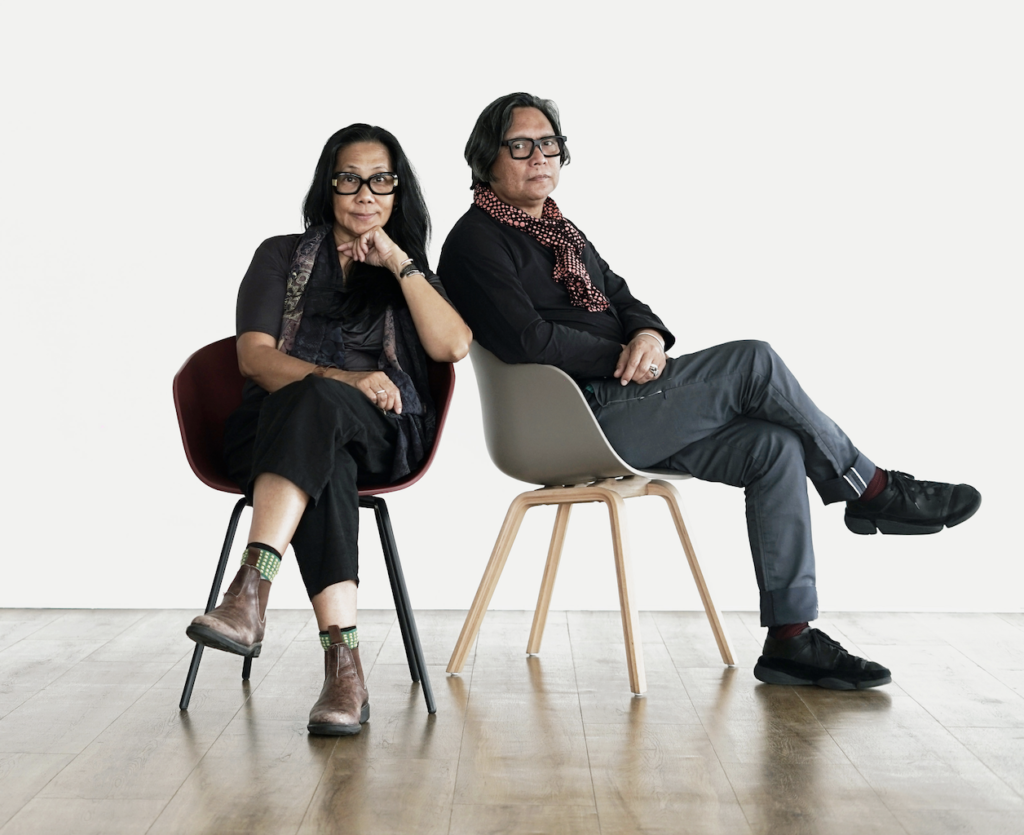
Alfredo and Isabel Aquilizan
Where are you right now? It looks beautiful.
Alfredo Aquilizan (A): We are at the dining table at our studio in Los Banos. We are surrounded by a lot of fruit trees and you can hear the sounds of cicadas at the moment. It’s about two hours away from Manila. It’s a university town at the foot of a dormant volcano.
Can we start from the beginning: How did you decide to become artists?
Isabel Aquilizan (I): We woke up one morning and realized. No, I’m kidding. Creativity has always been there since we were growing up. My background is in theatre and production. I loved to perform since when I was a child but I also appreciated the visual arts. Many of my relatives on my mother’s side were actresses. My dad used to sing but it didn’t work out for him so he ended up working in a paint company.
A: I came from a creative family. All of my uncles are Sunday painters and they were always making things. My dad did a lot of woodwork. When I was a kid I made sculptures. Then I got into college and decided to take Fine Arts because I thought it was a cool thing to do.
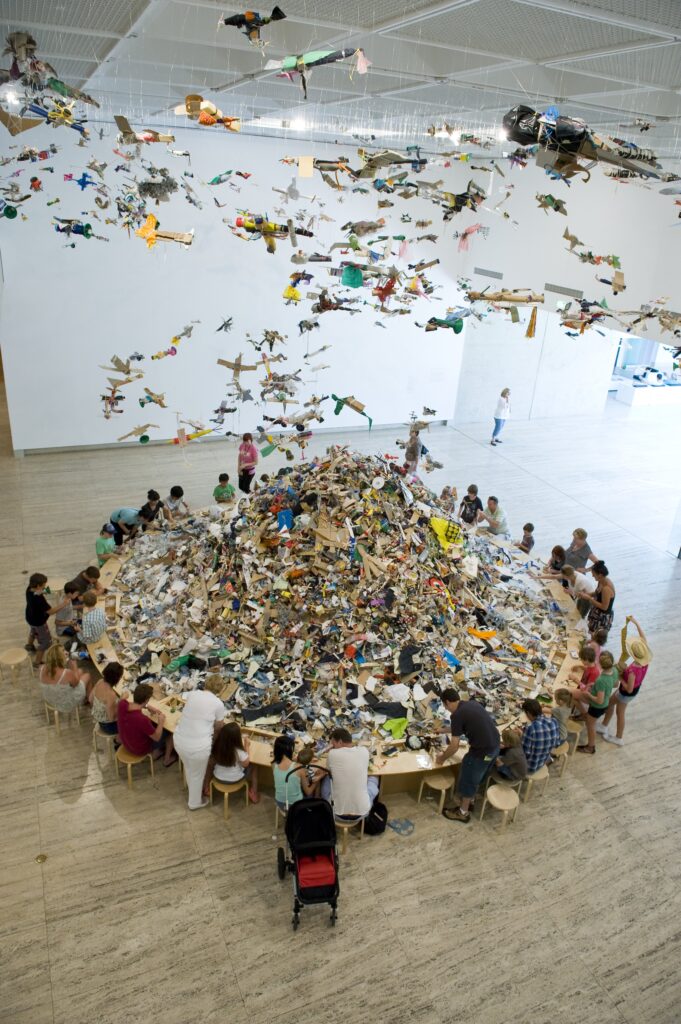
Audience members built makeshift airplanes as part of the Aquilizan’s work In Flight (Project: Another Country), 2009 at the 6th Asia Pacific Triennial of Contemporary Art, Queensland Art Gallery, Brisbane. (Courtesy of the artists and Yavuz Gallery).
How did you start working together?
A: We naturally started working together when we started having kids. We cannot separate our art practice with family and day-to-day living. We started with our main concern, which was bringing up the kids and things like going to the market to get food for everybody. We got our ideas from all of this. Some of my materials included using baby sweaters, diapers and milk. Collaboration came naturally.
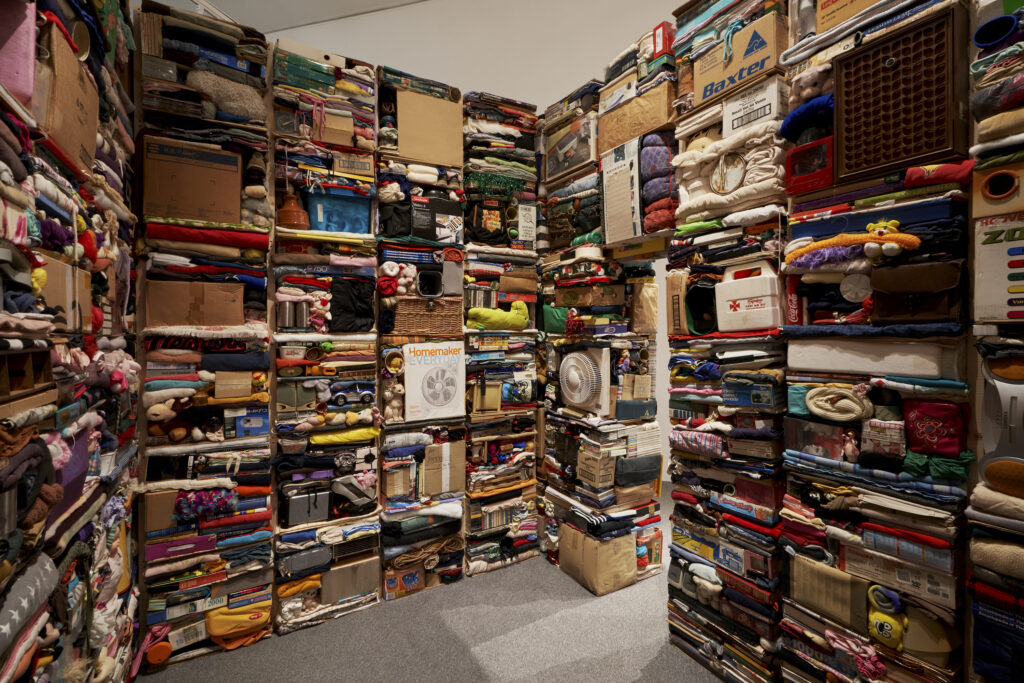
Address, 2008 was constructed with 140 boxes containing personal items forming a large cube-shaped room. (Courtesy of the artists, PODO Museum, and Yavuz Gallery).
You married young?
I: Oh my God, I was sixteen. No, I’m joking. He was my boyfriend since high school. We got married when I was 20. We had one child that year. Now we have five kids.
A: Early on, we were married and also trying to be artists which was a very difficult period.
There isn’t much support for young artists in Southeast Asia today let alone several years ago. How did you manage?
I: You just have to be creative.
A: You have to find a way to navigate around these things. That’s the reason why the concern of our work and even our materials were related to domesticity and family. You cannot shut down at some point and say, ‘I’ll be a father now and close my studio.
So the kids must have grown up in the studio. I understand they often help you create your work?
A: Yes. They jokingly call themselves ‘studio slaves.’
I: It’s our culture—that idea of helping each other. What’s the difference between someone doing the cooking, dish washing or the laundry. We all have to share the tasks.
A: Now all of them are working in the arts. Our oldest is a sculptor who also makes jewellery. Our second is a filmmaker in London. Our third is a fashion designer who also creates soft sculptures. Our fourth is a photographer who also does a lot of public art. Our youngest is an art history major.
I: We were not successful in discouraging them to be artists and to be something like doctors instead.
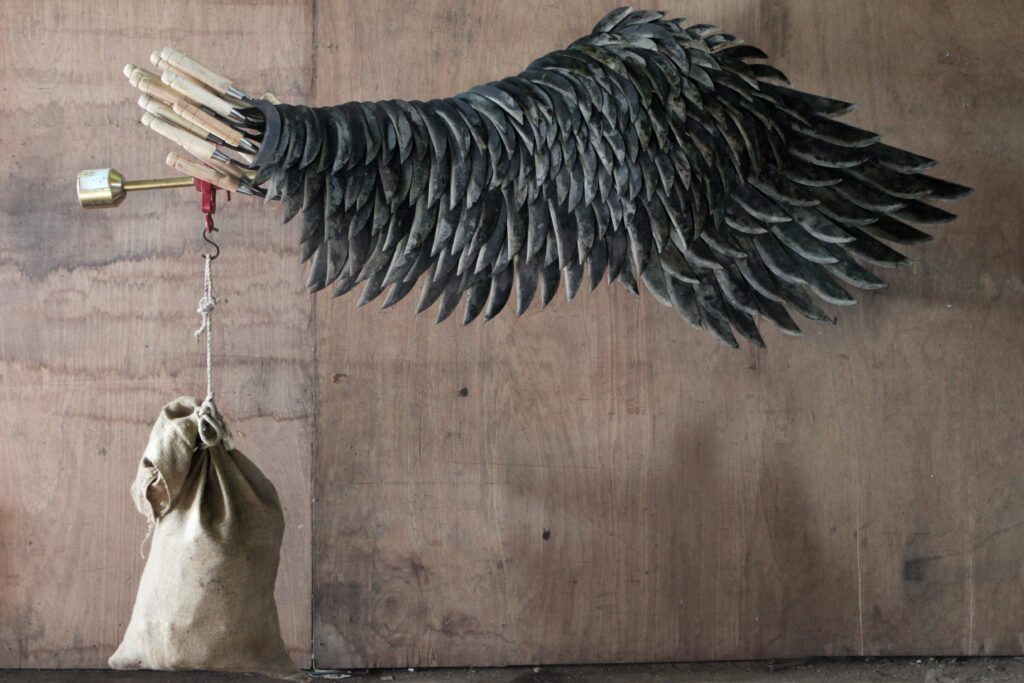
Left Wing Project (Belok Kiri Jalan Terus), 2017-2018, is part of a body of work created with farmers and blacksmiths from Yogyakarta (Courtesy of the artists and Yavuz Gallery).
How has your own experience of moving to Australia influenced your practice?
A: We came from the Philippines which is a country of migrants. We have a lot of overseas workers. Even before we moved ourselves, we were looking at ideas of being dislocated.
I: And the idea of finding home.
A: And being separated from family. I think this is a global issue. We moved to Australia in 2006. When we got invited for the Sydney Biennial, we thought our move could be a project. We packed our things and we ended up having only 12 boxes that the biennale shipped for us. So we just removed the boxes and the content inside was the work we showed.
I: Our work is all autobiographical. We cannot put a boundary on our art and life. The materials we used are what’s in front of us. The idea of “making do” is part of our sensibility as Filipinos.
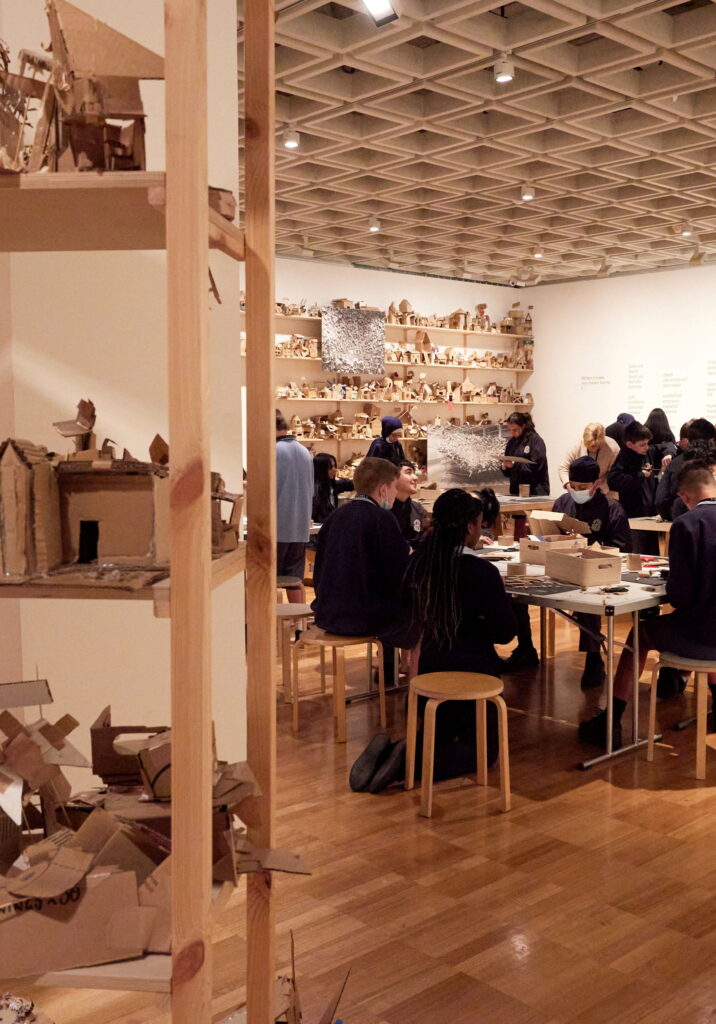
For their the exhibition Dreamhome: Stories of Art and Shelter at Sydney’s Art Gallery of New South Wales (AGNSW), the Aquilizans invited school and community groups to create their own cardboard dream homes (Courtesy of AGNSW and Mim Stirling)
You began working with everyday objects early on. Was this out of necessity?
I: Yes, it was really a struggle for us. When you don’t have support, you cannot buy expensive art materials. So why not make use of what’s available and create something out of that to tell your story.
A: And why create more rubbish? It’s also a strategy to use everyday materials as these are things that people can easily relate to. If they connect with a particular object, they start to actually engage with the deeper meaning of the work.
What was the first major milestone in your career when your work began to gain recognition and you stopped struggling as much?
I: We are still struggling. If there’s no struggle any more there’s no point. You have to have battles in life.
A: We chose a road which is more difficult because we work with communities and collaborate with institutions. We don’t work too much with commercial galleries so that makes it more financially difficult. How can I sell a used toothbrush or a cardboard box? But it’s always the path we wanted to pursue because we are educators. We use art as a tool to transmit ideas.

The Aquilizans worked with locals in the fishing village of Bagasbas Philippines to gather the used flip flops which they used to create this piece Last Flight I, 2009 (Courtesy of Yavuz Gallery).
From fishing communities in the Philippines to farmers in Yogyakarta, you often shine a spotlight on marginalized local communities. Is this the case for the upcoming MACAN show?
A: Yes, we also work a lot with artisans and craftspeople. For this show we’ve worked with local bird cage makers to make an airplane wing made entirely of bird cages. It’s a work we’ve actually been longing to make. The artisans have recycled old teak furniture to make 92 bird cages, which will be put together like a puzzle to create one large wing. It will be suspended in the air and we will have a recording of bird sounds from Yogyakarta.
What are you working on now?
A: We are packing our life actually. In the Indonesia show we will actually show a work made of three inverted boats about what’s happening in our life… about us moving again.
Where are you moving to and what’s next?
A: We’re going to base ourselves more here in the Philippines. We’re shifting our practice to work more with the local community here. We want to support the artisans—blacksmiths, metalsmiths, embroiderers and weavers—who we started helping during the pandemic to continue to rebuild their workshops so they can transmit their skill to their immediate community and the next generation.
Next, we’re going to rebuild the studio so it becomes some kind of a nerve centre for all these artisans’ workshops that we have been supporting around our region, and we hope this will create a ripple effect.
‘Somewhere, Elsewhere, Nowhere’ runs from 24 June – 8 October 2023 at Museum MACAN in Jakarta.
ABOUT THE AUTHOR: PAYAL UTTAM
Payal Uttam is a freelance journalist who has been covering art and design across the globe for more than a decade. Her work has appeared in publications including: CNN, The Wall Street Journal, Quartz, Artsy and The Art Newspaper among other titles. She divides her time between Hong Kong and Singapore.

Share this article: